Science Results: Solar System
| Spotlight | Image |
|---|---|
|
Mapping Water on the Lunar Surface
By Bill Reach and Joan Schmelz For the first time, SOFIA has made a detailed map of water on the surface of the Moon. Comparison with the lunar landscape shows that the water emission is strongest on the shady sides of deep craters and high mountains. Researchers used observations taken on 2022 February 17 as part of a SOFIA Legacy project intended to explore how water is distributed across the lunar surface. |
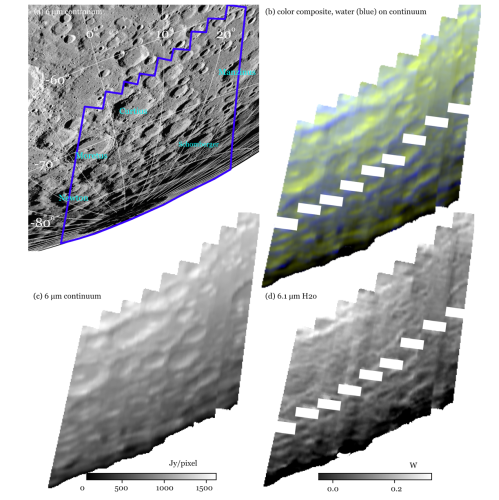
|
|
Water on the Moon 2022
By Anicia Arredondo
Paper:
Regional Map of Molecular Water at High Southern Latitudes on the Moon Using 6 μm Data From the Stratospheric Observatory for Infrared Astronomy
|

|
|
Atomic Oxygen in Earth's Upper Atmosphere
By Heinz-Wilhelm Hübers and Joan Schmelz
Paper:
Direct measurements of atomic oxygen in the mesosphere and lower thermosphere using terahertz heterodyne spectroscopy
|
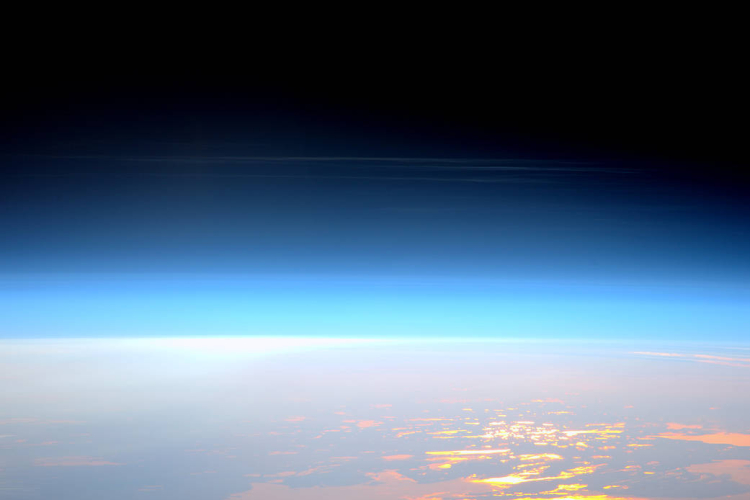
|
|
SOFIA Comet Studies Explore the Carbon Gradient in the Solar System
By Charles “Chick” Woodward, Kassandra Bell, and Joan Schmelz
Paper:
The Coma Dust of Comet C/2013 US
10
(Catalina): A Window into Carbon in the Solar System
|

|
|
Occultation Confirms Haze in Pluto’s Atmosphere
By Kassandra Bell, Arielle Moullet, and Joan Schmelz
Paper:
Haze in Pluto’s atmosphere: Results from SOFIA and Ground-based Observations of the 2015 June 29 Pluto Occultation
|
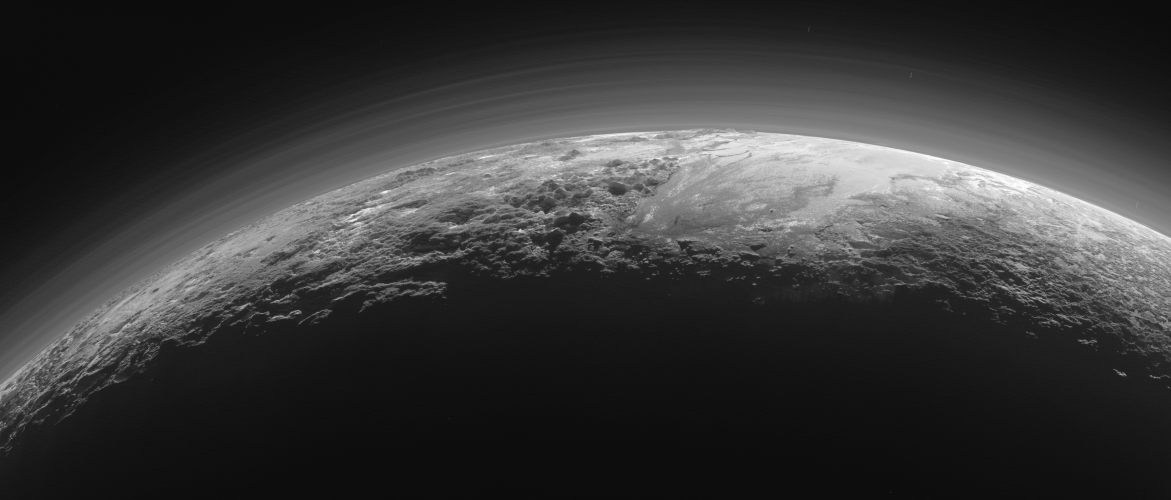
|
|
SOFIA Detects Water on the Moon
By Casey Honniball, Paul Lucey, and Joan Schmelz
Paper:
Molecular water detected on the sunlit Moon by SOFIA
Researchers using SOFIA have made the first-ever detection of the water molecule (H 2 O) on the sunlit surface of the Moon. This discovery refines our understanding of the behavior of water and how volatile elements and compounds interact with airless bodies throughout the Solar System and beyond. |

|
|
SOFIA Observations Fuel Debate about the Origin of the Earth’s Oceans
By Darek Lis, Dominique Bockelée-Morvan, and Rolf Güsten
Paper:
Terrestrial deuterium-to-hydrogen ratio in water in hyperactive comets
|
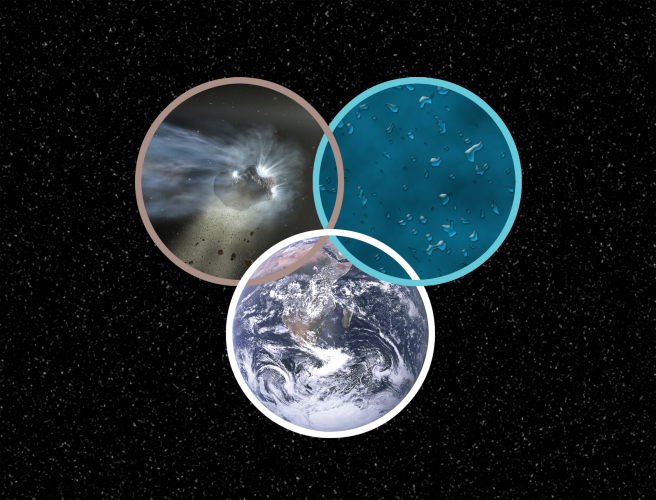
|
|
Does New Horizons’ Next Target Have a Moon?
Scientists were already excited to learn this summer that New Horizons’ next flyby target – a Kuiper Belt object a billion miles past Pluto -- might be either peanut-shaped or even two objects orbiting one another. Now new data hints that 2014 MU69 might have orbital company: a small moon. |
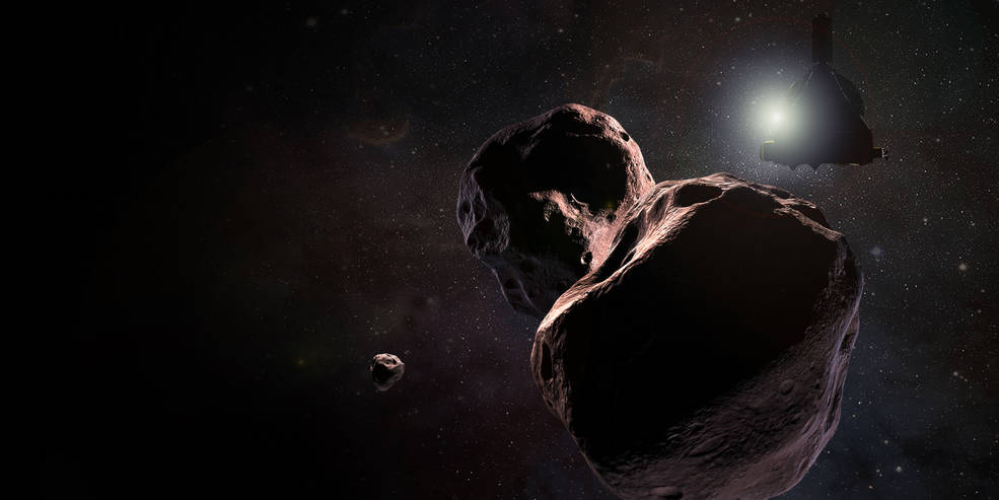
|
|
Observations of a Comet’s First Passage through the Solar System Reveals Unexpected Secrets
Comets are our most direct link to the earliest stages of the formation and evolution of the solar system. Only every few years is a new comet discovered that is making its first trip to the inner solar system from the Oort Cloud , a zone of icy objects enveloping the solar system. Such opportunities offer astronomers a chance to study a special class of comets. |
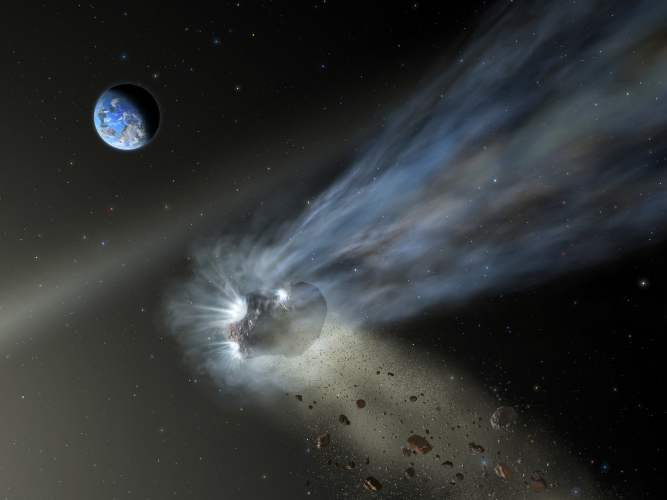
|
|
Catching the Shadow of a Neptunian Moon
Researchers on the flying observatory SOFIA, the Stratospheric Observatory for Infrared Astronomy, are preparing for a two-minute opportunity to study the atmosphere of Neptune’s moon Triton as it casts a faint shadow on Earth’s surface. This is the first chance to investigate Triton’s atmosphere in 16 years. |
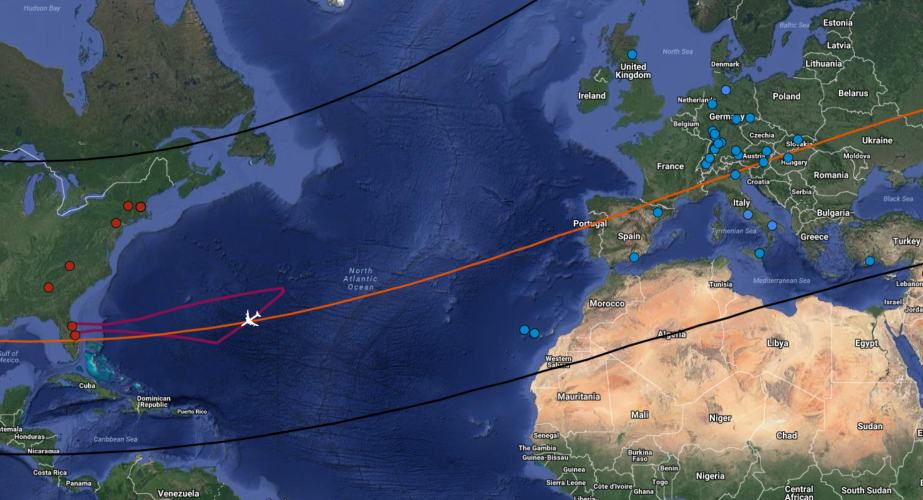
|
|
SOFIA In The Right Place At The Right Time to Study Next New Horizons Flyby Object
NASA’s airborne observatory, SOFIA, was in the right place at the right time to study the environment around a distant Kuiper Belt object, 2014 MU69 , which is the next flyby target for NASA’s New Horizons spacecraft. |
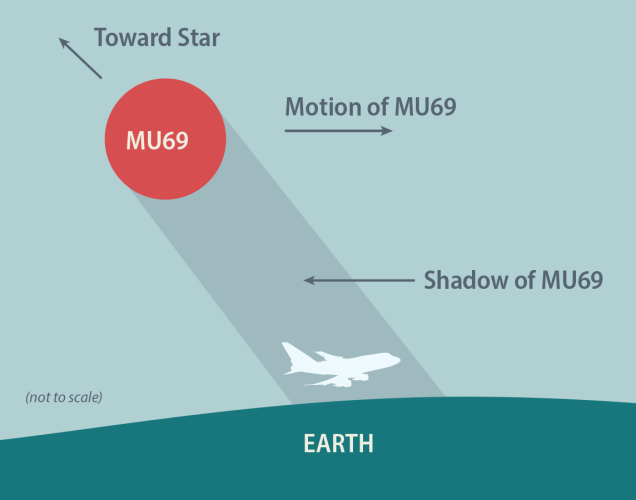
|
|
SOFIA Confirms Nearby Planetary System is Similar to Our Own
NASA’s flying observatory, the Stratospheric Observatory for Infrared Astronomy, SOFIA, recently completed a detailed study of a nearby planetary system. The investigations confirmed that this nearby planetary system has an architecture remarkably similar to that of our solar system. |

|
|
Don’t Judge an Asteroid by its Cover: Mid-infrared Data from SOFIA Shows Ceres’ True Composition
New observations show that Ceres, the largest body in the asteroid belt, does not appear to have the carbon-rich surface composition that space- and ground-based telescopes previously indicated. |

|
|
NASA Flying Observatory Makes Observations of Jupiter Previously Only Possible from Space
For the first time since the twin Voyager spacecraft missions in 1979, scientists have produced far-infrared maps of Jupiter using NASA’s Stratospheric Observatory for Infrared Astronomy, SOFIA. These maps were created from the researchers’ studies of the circulation of gases within the gas giant planet’s atmosphere. |

|